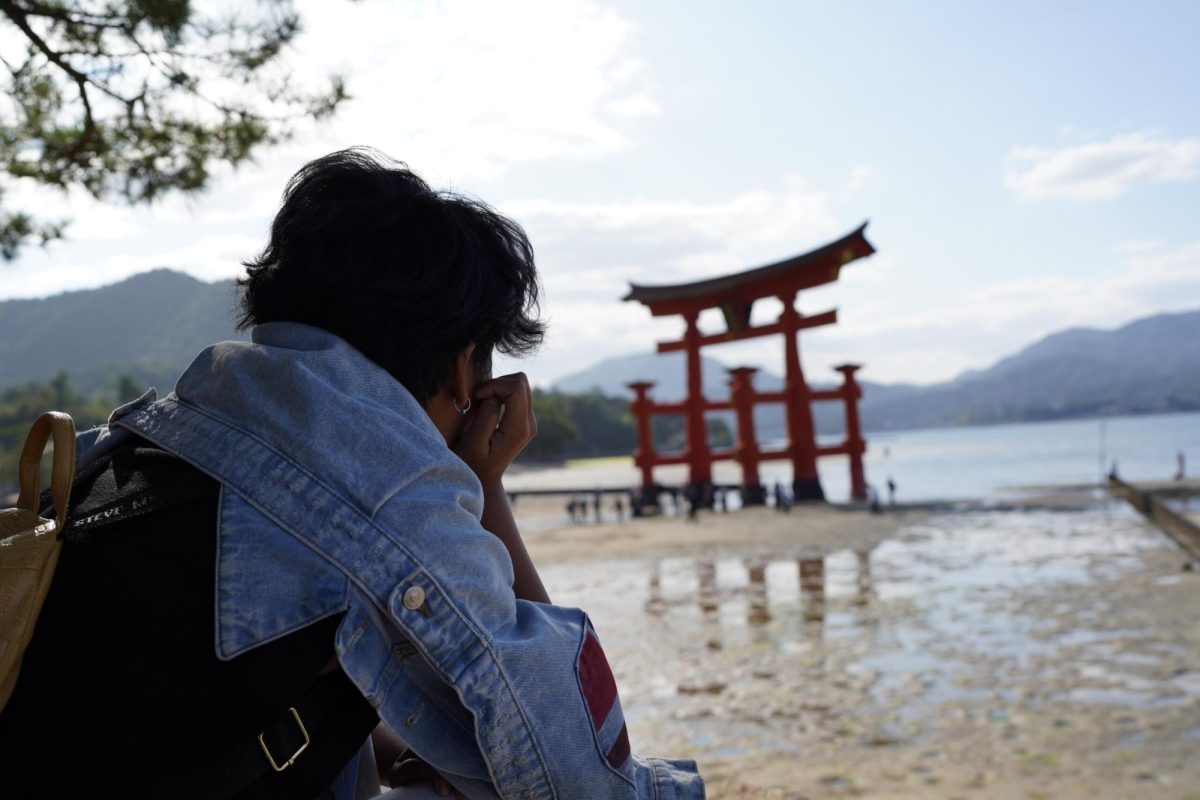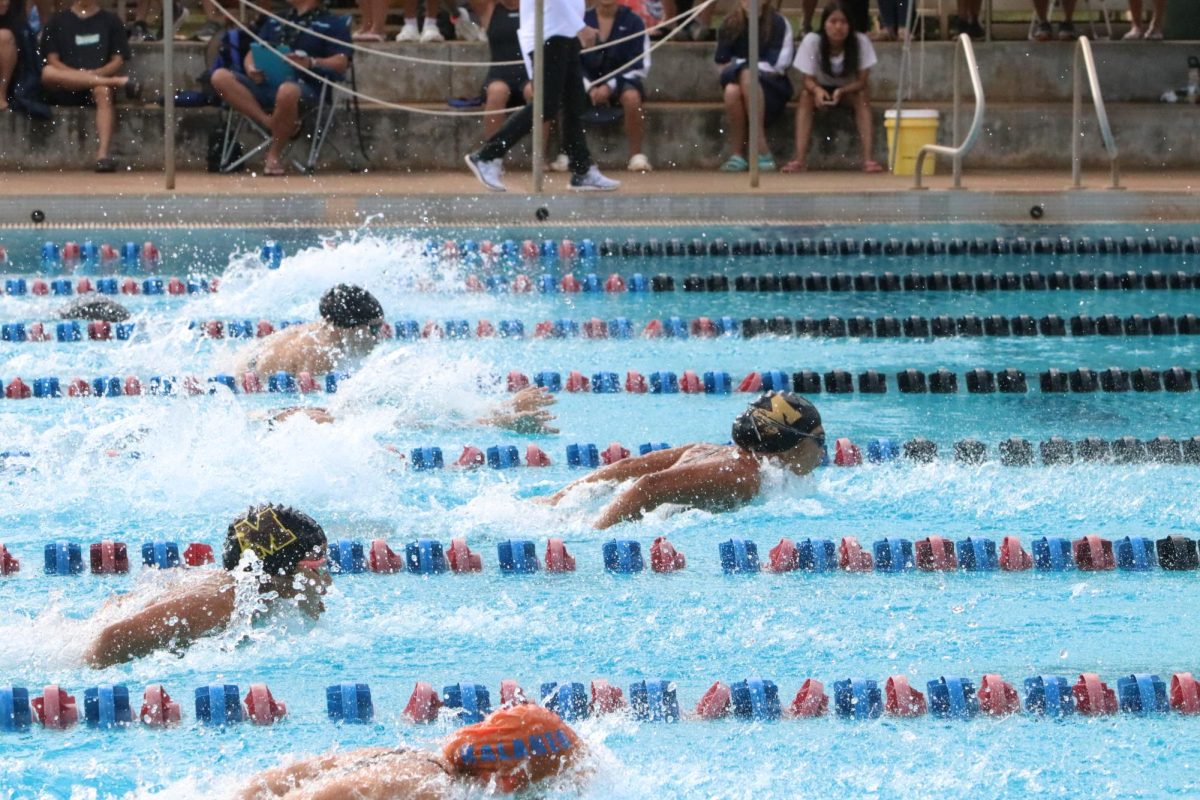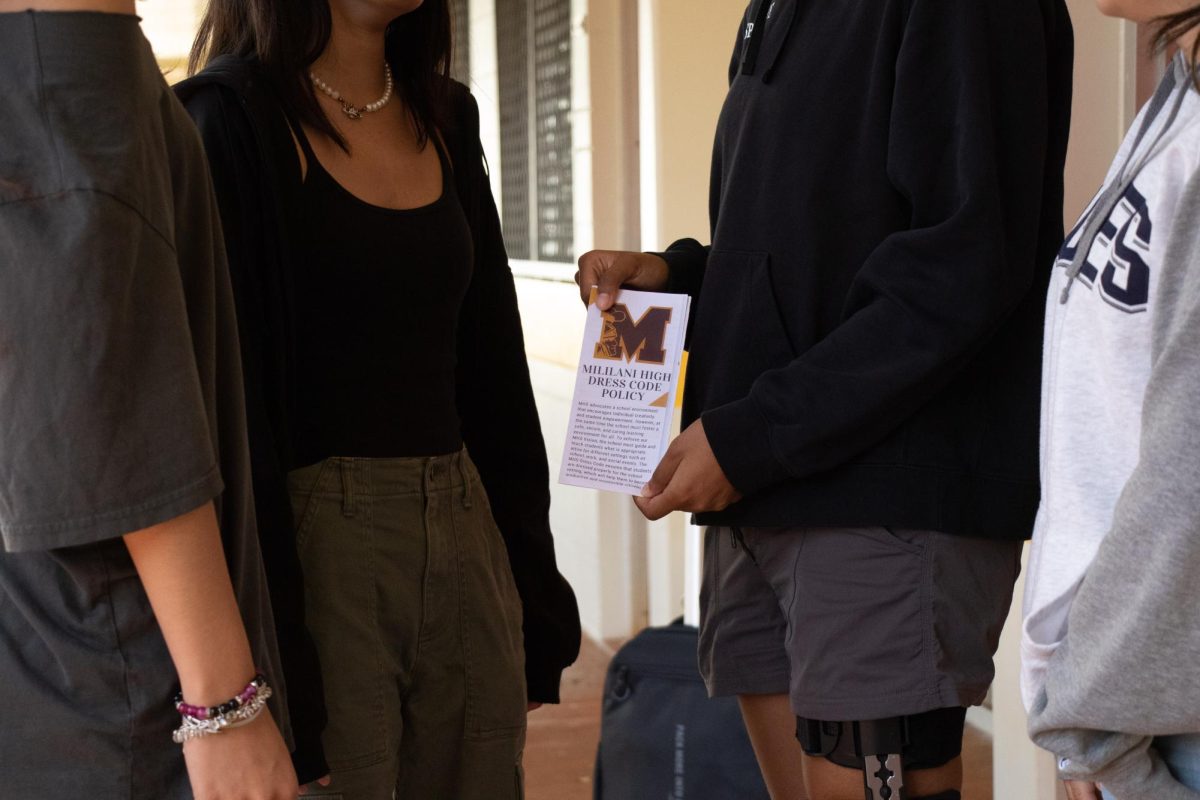Students Participate in National History Day
December 11, 2020
On Wednesday, November 25, students taking part in National History Day (NHD) in 2020 submitted their final project at 4 p.m. Participants in this program are not only open to 6th to 12th-grade students in Hawaii, but also thousands of students all across the country.
“You know, so what is fascinating about history day is it gives them (students) that wide leverage to choose topics. And, because of that, I think that kids can really develop a stronger, personal connection to what they are studying,” said Mililani High School social studies teacher Jason Duncan.
Students were able to choose any topic of their choice, as long as it corresponded to the theme; this year, it was “Communication in History: The Key to Understanding.” NHD projects also included a variety of categories that students can choose from: website, exhibit, research paper, documentary, or performance.
“My intentions for this project was to learn more about the topic of our choice. I definitely learned more about World War two and the unsung heroes who made a difference in history,” said junior Brayden Kajiwara.
An NHD project involves several different stages and takes typically eight to ten weeks to complete. Students began by choosing a topic of their choice and researching it in depth. Then, they found primary sources, such as photos, documents, or quotes, and transferred the information based on the category they chose. Lastly, they completed the annotated bibliography and the process paper, which explained how students developed their project, such as how they overcame challenges and what sources they used.
Research is one of the integral steps, and this is accomplished through making notecards on Noodle Tools. This is an online research management platform that allows you to cite your sources and create notecards (notes) for your research. Several students have found it difficult to use this tool.
“The main difficulty was having the time to work on it. I didn’t really overcome it, I just got lucky and didn’t have a lot of homework that last weekend. Another challenge was using Noodle Tools; I hate Noodle Tools with a burning passion. I cannot remember which notecard has what information, and I’m not about to open every single one and hunt for it,” said junior Annabelle Ink.
While some teachers chose for this project to be optional, others require students to take part as it develops skills in critical thinking, creativity, writing, and research. However, many students believed that NHD should not be required.
“The ability to research is absolutely necessary when you go to college and in any capacity or any career path that you choose, so learning how to do that is crucial. The ability to write and articulate yourself in writing – that’s something that you will use and apply across all disciplines. So, that’s something that is integrated into (the) history day process,” said Duncan.
There are other various difficulties teachers noticed when trying to guide their students through the project – particularly, misconceptions that students had on the research process. Oftentimes, students had trouble understanding what sources are reliable and useful for their project.
“A lot of kids think – the adults, by the way, too think this – you can just Google stuff and find the information in the first ten links that pop up are the essential information that you need to include in a project or an analysis. It’s just helping kids understand that the research process is much more in depth than that — that accessing academic sources, doing more specific and refined research is essential for them to develop their project,” said Duncan.
Duncan found that providing feedback was the most effective way to help students overcome these issues. This year, he set up virtual meetings with students and gave suggestions for improvement, such as what primary sources would be valuable for their project. Ultimately, however, he left it up to them to produce it.
Despite the adversities that both students and teachers faced, some appreciate the opportunities that NHD has to offer. In their classes, students may not have the chance to learn about topics that they are personally interested in. “My favorite thing about NHD is the opportunity to learn more about specific figures in history and their impact on the world – people who you would never learn about otherwise,” said Kajiwara.
A few weeks after the submission deadline, projects are showcased for students, parents, and the public to view on a designated day called NHD Night. Due to COVID-19, this showcase is set to be accessible virtually.
“I am just really excited. I think that what I want to do with my projects new this year, and this is just kind of a side note, is after the history day night, I want to find some sort of virtual way to showcase projects, especially students who want their projects showcased to a wider public,” said Duncan.
Duncan’s goal for showcasing these projects is to help teach students on certain topics that he covers in his classes. He also believed that it is not only helpful in terms of instruction, but also would also be a great opportunity for students to learn about topics that they would like to learn about on their own.
“My favorite thing I think is really just actually seeing kids getting fascinated with the topic of their choice – like really developing a genuine interest in it and being proud of what they produced. So, that end kind of result,” said Duncan.
Currently, the date for NHD Night is undecided. For more information about NHD, visit their official website at www.nhd.org



